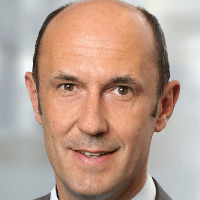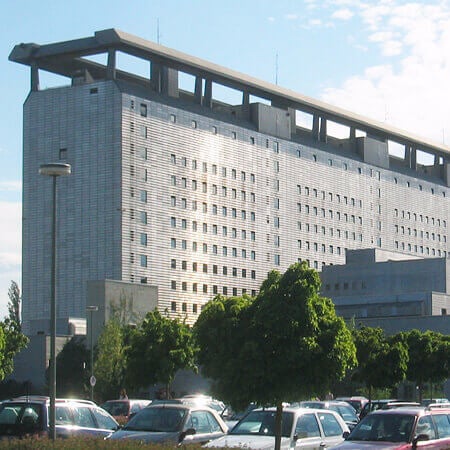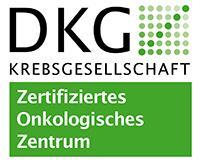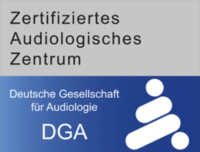Diagnostic of Nasopharyngeal Cancer abroad
Treatment prices are regulated by national law of the corresponding countries, but can also include additional hospital coefficients. In order to receive the individual cost calculation, please send us the request and medical records.

Department of Adult and Pediatric Otolaryngology
The Department of Adult and Pediatric Otolaryngology offers all the modern options of medicine for the diagnostics and treatment of hearing impairment, voice, sleep disorders. The specialists of the department have a huge arsenal of effective treatment methods and pay great attention to providing the best individual medical service. A particularly important department's focus is the treatment of head and neck tumors. In addition, the otolaryngologists of the department specialize in newborn hearing screening.




Department of Adult and Pediatric Otolaryngology
The Department of Adult and Pediatric Otolaryngology offers the full range of services in this medical field. The priority focuses of the department's clinical practice include the treatment of hearing impairment and hearing loss, diseases of the nasal cavity, paranasal sinuses, and skull base, as well as speech, voice, and swallowing disorders, and dizziness. The team of ENT doctors at the medical facility successfully copes with the treatment of malignant head and neck neoplasms. In cooperation with plastic surgeons, the department performs several types of facial plastic surgery, including rhinoplasty, otoplasty, blepharoplasty, scar revision, wrinkle treatment with Botox, and autologous adipose tissue injections. Thanks to outstanding specialists in their field and state-of-the-art medical equipment, the department is one of the leading medical facilities of this kind in Germany. The department has 102 beds and two large outpatient clinics. All diagnostic and therapeutic measures meet current national and international standards. Surgical interventions are performed using laparoscopic, endoscopic, and microsurgical techniques.







Department of Adult and Pediatric Otolaryngology, Head and Neck Surgery
The Department of Adult and Pediatric Otolaryngology, Head and Neck Surgery offers the full range of medical services in the areas of its specialization. The department's doctors conduct conservative and surgical treatment of diseases of the ear, throat, and nose. The department includes the Head and Neck Surgery Center, certified by the German Cancer Society (DKG), whose main clinical focus is the treatment of head and neck malignancies. The department's specialists also have excellent skills in paranasal sinus and skull base surgery, microscopic ear surgery, including the placement of hearing aids for congenital or acquired hearing loss, and plastic reconstructive surgery. Moreover, the department has been treating ENT diseases in children and adolescents for more than 50 years. Young patients with hearing loss, adenoiditis, tonsillitis, acute otitis media, acute sinusitis, and other pathologies regularly receive medical care here. The department's surgeons work in modern operating rooms adapted for endoscopic and microsurgical interventions. It is important for doctors to achieve an effective treatment result while taking into account aesthetic aspects. The department has gained a reputation as one of the best medical facilities of this kind at both national and international levels.






Nasopharyngeal cancer is a rare head and neck tumor. This type of cancer develops in the upper part of the throat, behind the nose, at the base of the skull. The treatment of this disease is quite challenging because the cancer is often diagnosed at an advanced stage. The tumor is difficult to remove, and therefore, chemotherapy and radiation therapy are considered the main methods for cancer treatment. Modern foreign hospitals can detect the disease at any stage, even at an early stage, which facilitates its treatment. Doctors use the latest diagnostic procedures to not only detect a tumor but also clarify its type, stage, and optimally plan treatment. You are welcome to use the Booking Health service to make an appointment for your diagnostics and treatment abroad at an affordable price. The cost of treatment for you will be lower than when you contact a hospital directly.
Content
- Symptoms
- Early diagnostics
- Diagnostic methods
- Confirmation of the diagnosis
- Tissue sample testing
- Medical imaging methods for staging of the disease
- Medical imaging methods for staging of the disease
Symptoms
The reason for visiting a doctor is usually neck swelling or a palpable lump. The first sign of the disease can sometimes be swollen lymph nodes.
Other possible symptoms of nasopharyngeal cancer include:
- nasal congestion;
- recurrent ear infections;
- hearing loss;
- earache;
- a feeling of clogged ears;
- nosebleeds;
- facial numbness;
- headache;
- double vision;
- speech disorders;
- inability to fully open the mouth;
- difficulty breathing.
Most of these symptoms manifest themselves in the advanced stages of oncology, when the tumor invades neighboring organs and tissues.
All of these signs are nonspecific. Most of them are associated with other diseases but not with oncology. The most specific symptom is a recurrent ear infection. Adults very rarely suffer from middle ear inflammation, and even if this condition occurs, it almost always develops due to a respiratory infection. If there are no signs of inflammation of the respiratory tract and the ear periodically becomes inflamed, this is a reason to see a doctor and get checked for oncology.
Early diagnostics
Most countries in the world do not offer any screening programs (mass population examinations) for nasopharyngeal cancer. As a rule, patients go to a doctor only after the onset of symptoms. This is due to the fact that the disease is rare. Even in regions with a high prevalence of the disease, 600 people need to be examined to identify one case of cancer. In addition, there are no simple tests or instrumental diagnostic methods that could easily detect nasopharyngeal cancer.
Hospitals in Europe do not conduct any screening for the disease. Nonetheless, in some high-prevalence areas, screening is still used in high-risk patients. For example, this is how they do it in China. Not all Chinese are screened for nasopharyngeal cancer, but only those who have relatives with this disease. So far, there is no evidence that these measures have led to a reduction in mortality from nasopharyngeal cancer.
According to European guidelines for the management of patients with nasopharyngeal cancer, screening should be carried out only in regions with a high incidence among men aged 42-62 years. It has been established that a mass examination of this category of the population increases the three-year relapse-free survival rate from 70% to 97% due to earlier detection of the tumor. Screening involves a test to detect EBV infection since this is the main cause of nasopharyngeal cancer. The test is repeated twice every 4 weeks. When combined with an MRI scan, this screening option allows doctors to establish or exclude the diagnosis with an accuracy of 98%.
Diagnostic methods
When a patient visits an otolaryngologist with symptoms that cause any suspicion of oncology, the doctor conducts a clinical examination. It will be followed by diagnostic tests such as:
- indirect nasopharyngoscopy, which is an examination of the nasopharynx with the help of mirrors;
- direct nasopharyngoscopy, which is an endoscopic examination of the nasopharynx with a tiny video camera.
A doctor may find a tumor during these procedures, but this is not always the case. Some patients develop cancer under the mucosa. In this case, a tumor can only be seen with medical imaging techniques.
Additional examinations to assess cancer risk before confirmatory methods of diagnostics will be used include:
- audiometry for hearing assessment;
- visual acuity testing;
- dental examination;
- assessment of speech and swallowing function by a speech therapist.
Confirmation of the diagnosis
The final diagnosis is based on the results of a biopsy of the tumor of the nasopharynx, which is performed under endoscopic guidance. A doctor can usually see the neoplasm on the mucous membrane, and in this case, with the help of forceps, the specialist pinches off a piece of tissue from it.
It happens that the tumor is initially invisible during endoscopy. The first manifestation of the disease is lymph node swelling due to the spread of metastases. In this case, samples are taken from several sites in the nasopharynx during endoscopy. The areas that are most suspicious of a tumor are identified using CT or MRI scans with a contrast agent.
A nasopharyngeal biopsy is an unpleasant invasive procedure, but foreign hospitals perform it under general anesthesia. Doctors use safe intravenous anesthesia, which does not require any tracheal intubation and hospital stay. Patients quickly recover from such anesthesia and do not suffer from a headache on awakening.
Some patients require a lymph node biopsy to determine the stage of cancer. It is not done if it is planned to start treatment with surgery. But more often than not, chemoradiotherapy becomes the first treatment option, and operations are performed to remove not only the primary tumor itself but also cervical lymph nodes. If doctors perform such a surgical procedure for cancer treatment, then subsequently the removed lymph nodes will be examined in the laboratory. Doctors may perform a needle biopsy of swollen cervical lymph nodes to see if they have cancer cells to assess the indications for cancer surgery.
Tissue sample testing
To choose the tactics of nasopharyngeal cancer treatment, it is important to determine the type of tumor. The tissue samples obtained during a biopsy are sent for a histological examination. There are not so many options: keratinizing, nonkeratinizing (which can be differentiated and undifferentiated), or basaloid squamous cell carcinoma.
Nonkeratinizing cancer is more common, as it is associated with EBV infection. The human papillomavirus is another possible cause of cancer. During the diagnostics, doctors usually check for these infections using a PCR test.
If you are undergoing your diagnostics and treatment of the disease at hospitals in developed countries, doctors will also conduct molecular tests. They increase the price of diagnostics but allow for better treatment planning. Doctors measure the amount of PD-L1 protein in biopsy samples to see if treatment with immune checkpoint inhibitors will be effective.
Medical imaging methods for staging of the disease
After confirming the diagnosis, it needs to be clarified to choose the best treatment tactics, assess the advisability of surgery, and plan the operation. Doctors look for metastases in the lymph nodes and distant organs. As a result of the diagnostics, the clinical stage of the disease will be established. The pathomorphological stage will be established after surgery, when specialists will examine the removed lymph nodes in the laboratory.
Basic diagnostic methods include:
- A chest X-ray helps to detect metastases in the chest. It is often carried out in countries with a low level of medicine, but is less and less used in modern hospitals due to the advent of more advanced methods of diagnostics.
- A CT scan is one of the main ways to visualize the tissues in the head and neck. It helps to assess the state of the primary tumor and its spread from the nasopharynx to the neighboring organs and tissues. The method also detects swollen lymph nodes in the neck and is used to visualize the chest organs to detect metastases in the lungs. Although the cost of this diagnostic test is higher than that of an X-ray scan, a CT scan is more accurate and can detect even small metastatic foci.
- An MRI scan is even more accurate than a CT scan and shows soft tissues in the nasopharynx. This diagnostic imaging procedure helps to determine the spread of cancer. An MRI scan is performed with intravenous gadolinium contrast enhancement to produce clearer images and distinguish between the tumor and normal tissue.
- A PET is another imaging test for which doctors inject a radioactive form of glucose intravenously and then use a gamma camera to assess where the radiopharmaceutical accumulates the most. These are areas with high metabolic activity. The diagnostic procedure can be used to detect distant cancer metastases as it allows specialists to scan the entire body at once, although the images are not as clear. This problem is solved with the help of devices that combine PET and CT scans. It is in this form that diagnostics are carried out in most modern hospitals abroad.
What hospitals offer diagnostics at an affordable price?
You can undergo your diagnostics at one of the world's best hospitals abroad. Prices at leading medical centers are higher, but the accuracy of diagnostics is higher as well. With advanced diagnostic procedures, doctors quickly determine the presence of cancer, if any, its stage and type, and evaluate the prognosis. New diagnostic methods help to optimally plan surgery and make medical treatment more personalized to improve outcomes in the advanced stages of cancer.
There are a few reasons for you to undergo your diagnostics abroad. These are as follows:
- diagnostics is provided in compliance with current European protocols;
- availability of state-of-the-art diagnostic equipment;
- even the most unpleasant examinations are comfortable for patients and can be performed under safe intravenous anesthesia, if required;
- tumors can be detected even at an early stage;
- nasopharyngeal cancer can be successfully detected even when the tumor is located under the mucous membrane;
- doctors use molecular diagnostics to determine the prognosis and select a treatment regimen for the disease;
- specialists use effective methods for detecting metastases even before a histological examination of distant lymph nodes;
- hospitals offer full-fledged general clinical diagnostics to assess the patient's condition before treatment, which helps to take timely measures to reduce the risk of complications.
After your diagnostics abroad, you can immediately undergo treatment. Most often, doctors start to treat their patients with radiation therapy and chemotherapy. As a result, the tumor may disappear completely. If metastases persist in the lymph nodes, surgical treatment will be performed to remove them. Cancer treatment abroad is safe and effective and provides good oncological and functional results (doctors preserve the functions of the neck organs whenever possible).
You are welcome to use the Booking Health service to find the cost of treatment and compare prices in different hospitals. Our website offers the current prices at which you can make your treatment appointment at the hospital. The cost of treatment will be lower for you. The reason for this is that prices are reduced due to the absence of additional fees for foreign patients. Our specialists will fully organize your trip. With Booking Health, you will save yourself from unnecessary worries. When making your appointment through the Booking Health service, you can also be sure that the initial price for your treatment abroad will not increase, even if additional procedures are required. All extra expenses will be covered by your medical insurance.
Authors:
The article was edited by medical experts, board-certified doctors Dr. Nadezhda Ivanisova and Dr. Vadim Zhiliuk. For the treatment of the conditions referred to in the article, you must consult a doctor; the information in the article is not intended for self-medication!
Sources:
National Center for Biotechnology

